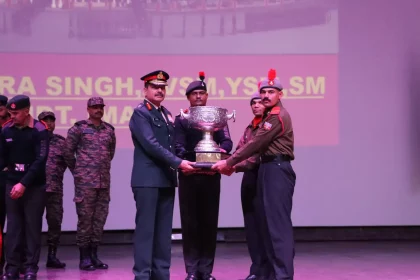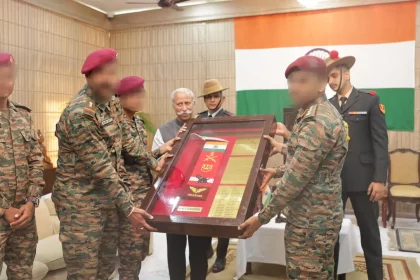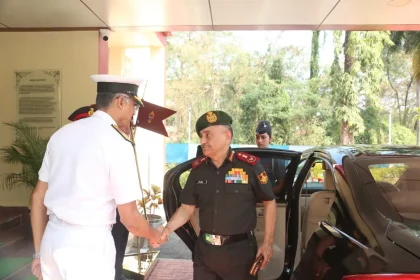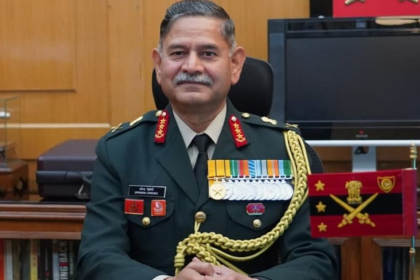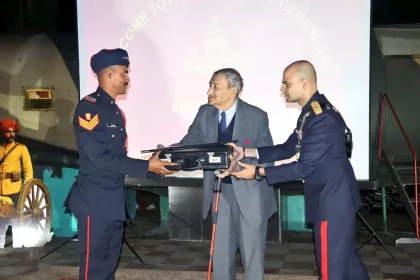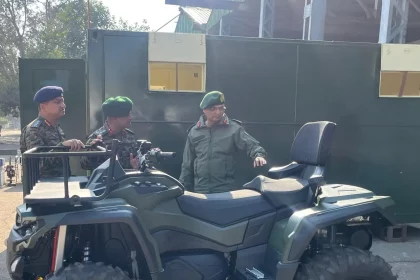Outstanding Officer Cadets Honoured at IMA Prize Distribution Ceremony
IMA Celebrates Excellence as Top Cadets Shine Ahead of POP 2025.
Arunachal Governor Felicitates Gajraj Corps Team for Historic First Ascent of Mt Kangto
Arunachal Governor Honours Gajraj Corps Mountaineers for Historic Southern Ascent of Mt Kangto.
CDS General Anil Chauhan Addresses Trainee Officers at MILIT, Highlights Need for Tech-Driven Defence Architecture
CDS Gen Anil Chauhan Stresses Tech-Enabled Defence Management in Address to MILIT Trainee Officers.
Army Chief General Upendra Dwivedi to Review Passing Out Parade at IMA on December 13
Army Chief Upendra Dwivedi to Review IMA’s Iconic Parade on December 13.
Artillery Officer Cadets Felicitated Ahead of Commissioning Parade at IMA on 13 December, 2025
Veteran Gunners Inspire Young Cadets as They Prepare to Join the “Arm of Decision”.
Lt Gen Navin Sachdeva Reviews Engineering Support Capabilities at 510 Army Base Workshop
Senior Army Leadership Praises Indigenisation Efforts and Maintenance Excellence.

